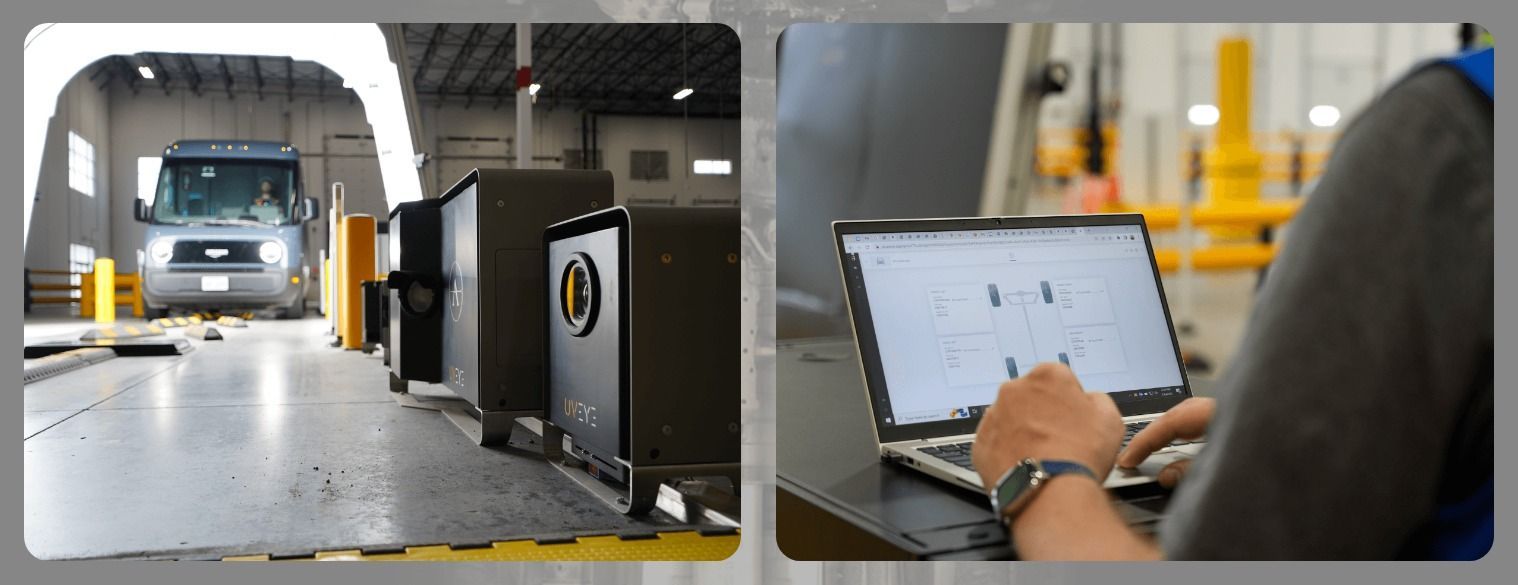Amazon has embarked on yet another remarkable journey of innovation. Imagine a world where your Amazon packages are delivered swiftly and with unmatched safety and precision. This vision is becoming a reality as Amazon introduces its AI-powered van inspections. This revolutionary system combines the power of artificial intelligence and state-of-the-art technology to scrutinize every inch of their delivery vans.
The result? An unprecedented level of safety, efficiency, and transparency. Let’s unveil the magic behind Amazon’s AI-powered van inspections and why it’s a game-changer in the world of e-commerce and logistics.
Driving into the future
Amazon’s AI-powered van inspections are a cutting-edge technological solution that the e-commerce giant is implementing to enhance its vast fleet of delivery vans’ safety, efficiency, and transparency. This innovative system employs a combination of high-resolution cameras and artificial intelligence to thoroughly inspect delivery vehicles, ensuring they are in optimal condition for the demanding task of delivering packages across the globe.

Here’s a detailed explanation of how Amazon’s AI-powered van inspections work:
- Camera-studded archways: At selected Amazon delivery centers, the company has installed camera-studded archways equipped with advanced technology known as AVI, or Automated Vehicle Inspection. When a delivery driver returns their van at the end of a shift, they must drive their vehicle through one of these archways. These archways serve as the entry point for the inspection process.
- High-resolution camera systems: The AVI technology comprises three separate high-resolution camera systems, each with a specific inspection focus:
- Undercarriage inspection: One camera system scans the vehicle’s undercarriage, capturing detailed images of this crucial area. It looks for issues like fluid leaks, damaged components, or any foreign objects like nails or debris.
- Tire quality check: Another camera system is dedicated to assessing the condition of the vehicle’s tires. It inspects for wear and tear, tire pressure, and the presence of any punctures or damage.
- Exterior inspection: The third camera system focuses on the exterior of the vehicle. It captures images of the vehicle’s body, checking for dents, scratches, and any damage to the windshield or other exterior parts.
- Data compilation: As the vehicle passes through the archway, the data captured by these high-resolution cameras is collected in real-time. The images and information gathered by the camera systems are then compiled into a comprehensive 3D image of the vehicle.
- AI-powered analysis: The real magic happens when this 3D image is processed by machine-learning software. The AI algorithms are trained to identify even the smallest imperfections or issues in the vehicle. They can detect things that a human inspector might easily overlook, such as a tiny nail lodged in a tire or a barely visible dent.

- Damage identification: The AI algorithms analyze the compiled data to identify any damage or maintenance needs. It can pinpoint issues like nail punctures in tires, fluid leaks, dents on the vehicle’s body, or cracks in the windshield. This precise identification of problems is a critical aspect of the inspection process.
- Time savings: Amazon’s senior manager of last-mile products and services, Aziz Makkiya, has noted that this technology significantly reduces the time required for the inspection process. On average, it shaves about four minutes off what would typically be a five-minute manual inspection.
- Enhanced safety: Beyond time savings, the primary objective of this technology is to enhance the safety of Amazon’s delivery fleet. By identifying maintenance issues early, the company can proactively address them, reducing the risk of vehicle failures during deliveries. This, in turn, ensures safer and more reliable delivery services.
- Data utilization: The data collected by the AI-powered vehicle inspections is not limited to vehicle maintenance alone. It can be used to inform broader company decisions. For instance, if certain routes consistently result in vehicle damage, Amazon can notify local authorities about necessary road maintenance. The data can also guide vehicle purchases and provide feedback to manufacturers, helping them improve their products.
- Global rollout: Amazon has been testing this automated vehicle inspection system for nearly two years and has now deployed it to 20 delivery stations in the US, Canada, Germany, and the UK. The company has ambitious plans to install hundreds of these inspection units in the coming years.
In essence, Amazon’s AI-powered van iInspections represents a powerful synergy of advanced technology and logistics. It enhances the safety and efficiency of Amazon’s delivery operations and showcases the company’s commitment to staying at the forefront of technological advancements. Implementing this technology ensures that Amazon’s customers receive their packages on time and in top-notch condition, further solidifying the company’s position as a leader in the world of e-commerce and delivery services.
For more detailed information, click here.
Featured image credit: Andrew Stickelman/Unsplash





